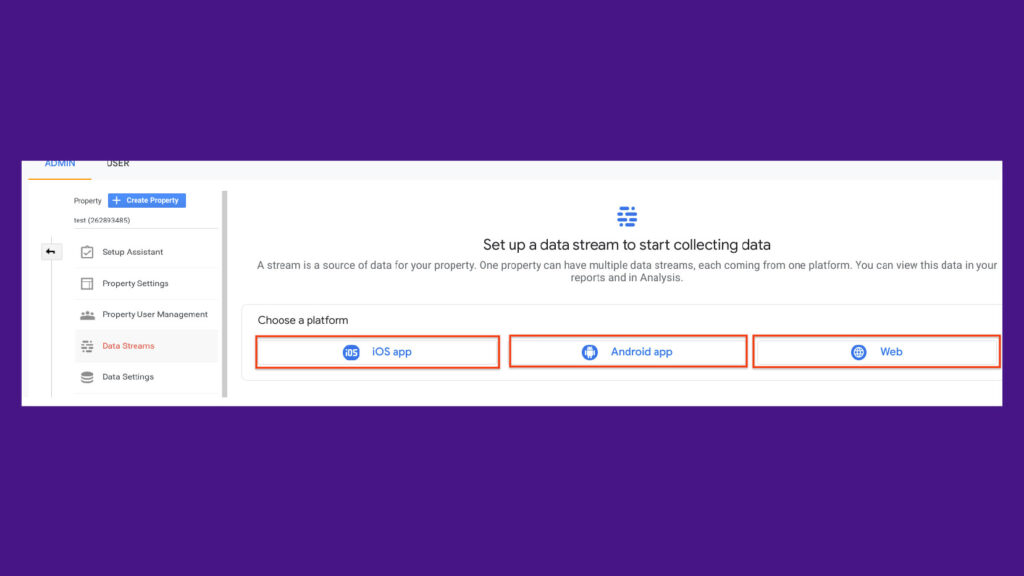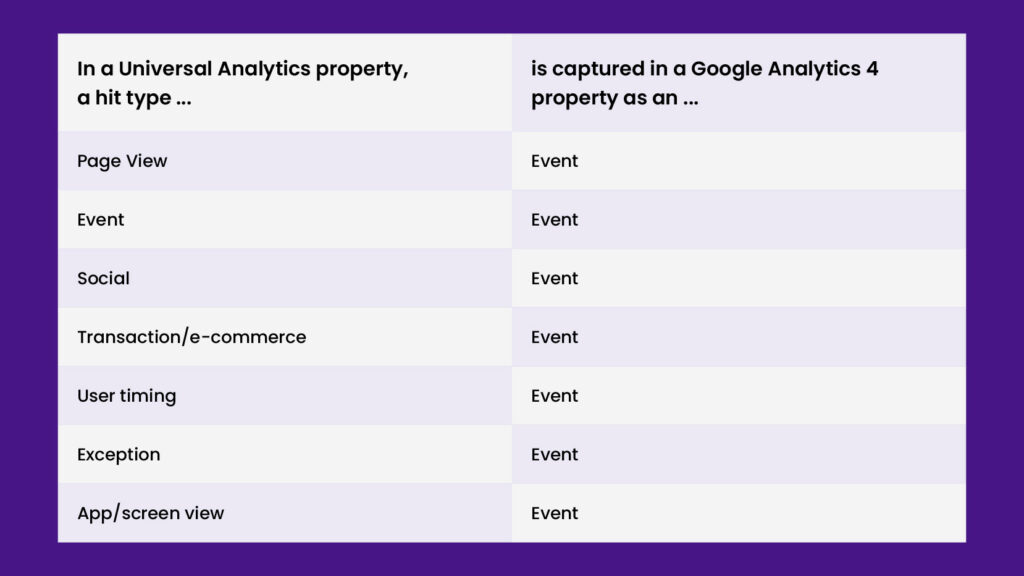From 1 July 2023, Universal Analytics (AKA Google Analytics) will be replaced by GA4; Google’s updated Analytics package with an increased focus on data visualization and machine learning. Seasoned UA users will need to get stuck in with the new Analytics package before there’s no turning back. Here are some of the key differences you should be aware of as you’re getting to grips with GA4.
Web and App Friendly
Historically, website data would be viewed through Universal Analytics, whilst app data would be collected through an SDK such as Firebase, and then linked to Analytics. In GA4, ‘Data Streams’ replace UA’s ‘Views’; multiple Data Streams can be added under one GA4 property and can pertain to either a brand’s website or app. Whilst Google Analytics for Firebase enabled app analysis through Analytics, GA4 allows web and app data to be combined for unified reporting – great news for brands who would benefit from seeing a customer’s holistic journey between brand properties.

Screenshot from Google Analytics Help, March 2023
Streamlined Measurement Method
You may be familiar with a number of measurement methods employed within Universal Analytics to track various on-site actions. For example, events have historically been used to track actions without a destination URL (watching a video on the website, or clicking to download a PDF brochure), whilst page views reported on a user’s navigation around a website.
Within GA4, all measurement is based on ‘events’ of which there are four types; two of these event types are automatic, and two types of events require implementation and configuration.
Automatic events types include:
- Automatically collected events: Collected when you set up GA4
- Enhanced measurement events: Collected when GA4 is set up and enhanced measurement is active
Events requiring implementation:
- Recommended events: Configure these using predefined names and parameters to enhance and future-proof your reporting
- Custom events: For use only when no other existing event serves the purpose. Custom reports will be required to analyze this data, as custom events don’t tend to appear in standard GA4 reporting

Table from Google Analytics Help, March 2023
Metric Definitions
With a change in the data collection method comes new and/or updated metrics which could impact not only how data is interpreted, but how the metric itself is defined.
A session, for example, is defined as a period of time spent on your website, which could be inclusive of multiple interactions such as page views, purchases and events. A session in Universal Analytics is considered to have ended after 30 minutes of inactivity, with the lack of further signals indicating the user has left the site and ended the session. GA4 however will simply use the time between the first and last event to determine the length of a session. Whilst this is only a small change, the variation in metric calculation will be enough to cause a notable discrepancy between UA and GA4 session volumes.
GA4 also introduces ‘Engaged Sessions’, a new metric indicating quality visits based on a session duration of >10 seconds, a conversion event taking place, or 2< page or screen views. Engaged Sessions comes as Bounce Rate is due to be phased out, and provides an alternative indicator of valuable traffic.
GA4’s renewed focus on ‘valuable’ visits brings a new metric to the fore: ‘Active users’. This segment joins the pre-existing Total Users and New Users metrics for an overall view of site users. Whilst UA’s default user metric is ‘Total Users’, GA4 adopts ‘Active Users’ as its primary user metric, indicating users with an ‘engaged session’, or those who have collected either first visit/open events or necessary engagement parameters.
As is the case with any two tracking systems, discrepancies will doubtless crop up for many businesses during the transition from Universal Analytics to GA4. It’s important to recognize discrepancies caused by varying metric definitions or measurement methods versus those caused by incomplete or misconfigured tracking (I.e. Discrepancies which do or do not require action to be taken).
Whether the switch to GA4 fills you with hope or panic, the transition date is rapidly approaching and planning ahead will be crucial to a smooth switchover. Implement GA4 alongside your Universal Analytics profile and start collecting data now to futureproof your reporting.




